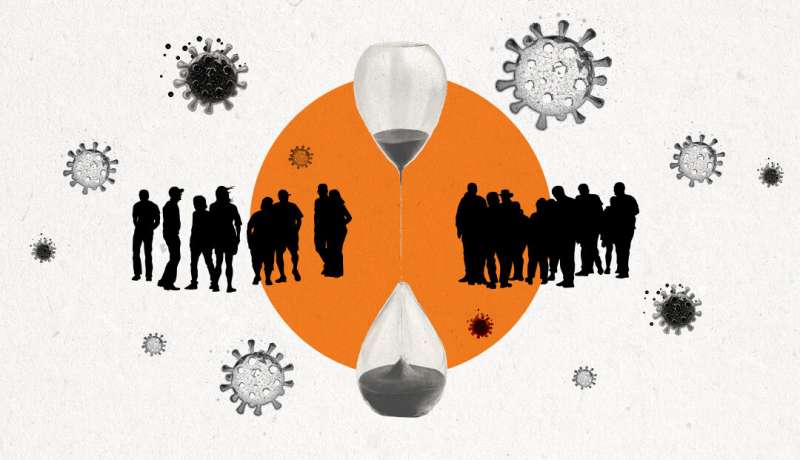Life expectancy drops for Native Americans due to COVID-19


Native Americans have experienced disproportionately high rates of deaths from COVID-19 due to poverty, crowded housing, high rates of chronic disease, employment in frontline jobs, and limited access to quality health care.
Less is known about the pandemic’s effects on life expectancy for this population, which makes up 2% of the U.S. population.
Noreen Goldman of Princeton University and Theresa Andrasfay, Ph.D. of the University of Southern California investigated life expectancy at birth in 2020 and 2021—when COVID-19 rates were surging—compared to 2019.
Life expectancy is a metric of population-level mortality in a given year, and it is sensitive to deaths at younger ages.
Findings
The pandemic set Native Americans further behind other major racial and ethnic groups in terms of life expectancy. For a high-income country, these figures are shockingly low, the researchers said, and far below every country in the Americas except for Haiti.
- The estimated loss in life expectancy at birth for Native Americans is 4.5 years in 2020 and 6.4 years in 2021 relative to 2019.
- The pandemic reduced Native American life expectancy at birth from the already low 72 years in 2019 to about 67 years in 2020 and about 65 years in 2021 for both sexes combined.
- Men and women each experienced around a six-year drop in life expectancy at birth.
- Women’s life expectancy was 69 in 2021, 71 in 2020—compared to 75 in 2019.
- Men’s life expectancy was 62 in 2021, 64 in 2020—dropping from 69 in 2019.
Although much of this decline resulted directly from COVID-19 deaths, mortality from several chronic diseases also increased substantially for Native Americans during the pandemic. Those with “long COVID” or comorbidities may have been more likely to die from non-COVID causes, and detrimental health behaviors like smoking, drinking, and drug use also became more prevalent during this time—all likely contributing to upticks in mortality rates.
Policy point
Despite a successful vaccination campaign among Native Americans, the loss in life expectancy at birth in 2021 unexpectedly exceeds that in 2020. There are a few plausible explanations for this disturbing finding:
- Vaccines weren’t available to the public in January and February 2021, two of the deadliest months of the pandemic.
- Two highly contagious variants (Delta and Omicron), which partially avoided natural and vaccine-acquired immunity, emerged in 2021.
- Many Native Americans, like the general U.S. population, are still not vaccinated or did not receive a booster shot.
- Deaths from several chronic diseases and drug overdoses increased for all populations during the pandemic, contributing to these dire figures.
Most importantly, Native Americans continue to experience large social, economic, and health inequities, some of which have persisted for centuries, and all of which increase the risk of COVID-19 infection, hospitalization, and death.
“The large financial investment in the American Rescue Plan to enhance identification and treatment of COVID-19 infections and to strengthen the public health infrastructure for the Native American population is a significant step forward,” said Noreen Goldman of the Princeton School of Public and International Affairs.
Goldman and Andrasfay used data on age-specific all-cause mortality rates from the Centers for Disease Control and Prevention WONDER online database and the 2019 life table recently released by the National Vital Statistics System for Native Americans to calculate life tables for the Native American population in 2020 and 2021 and to obtain estimates of life expectancy reductions during the COVID-19 pandemic.
Source: Read Full Article